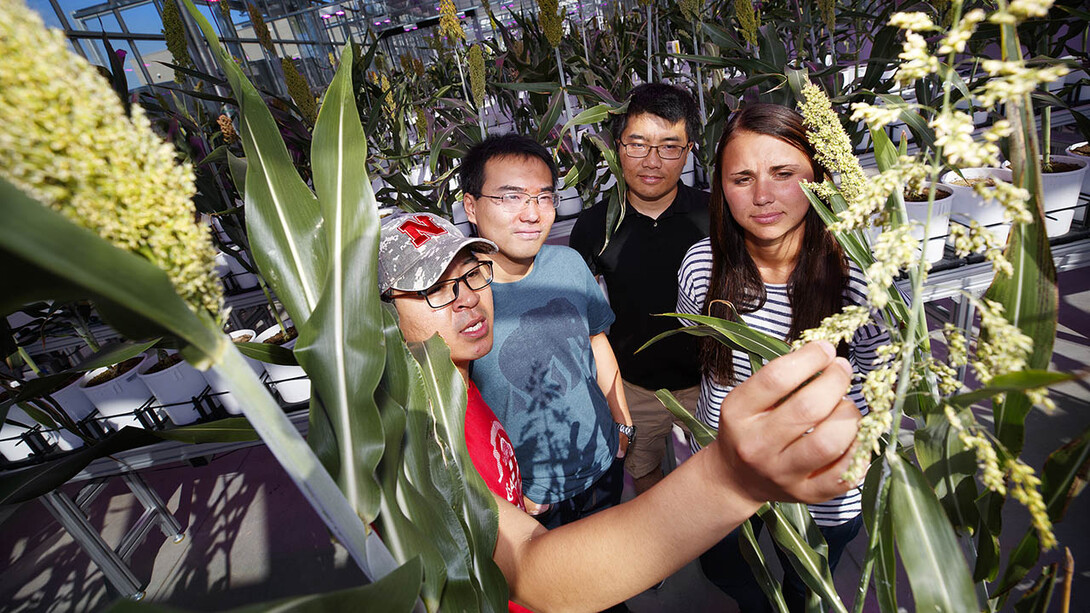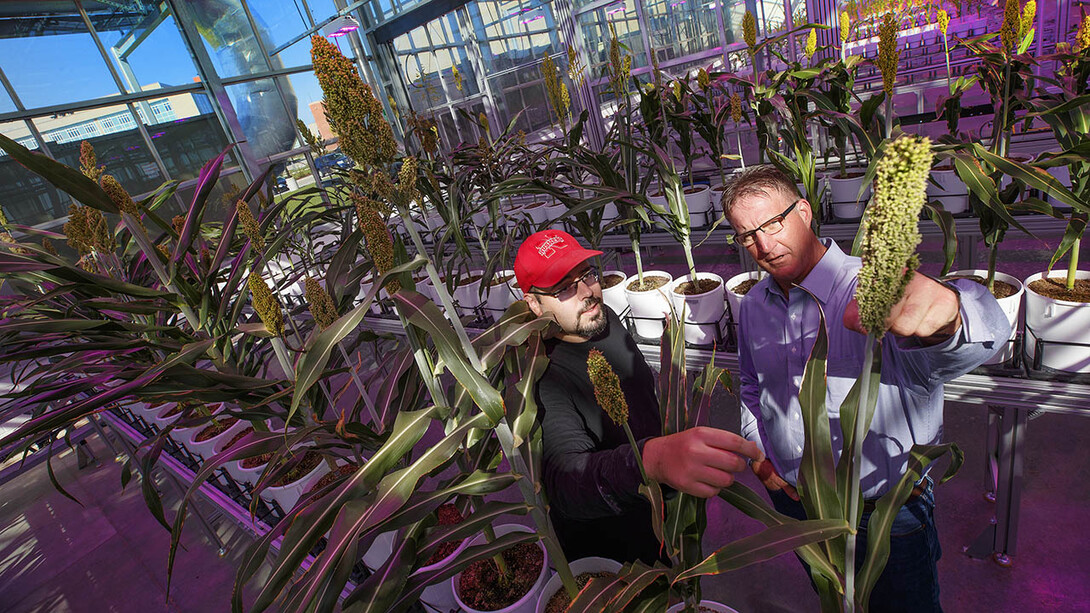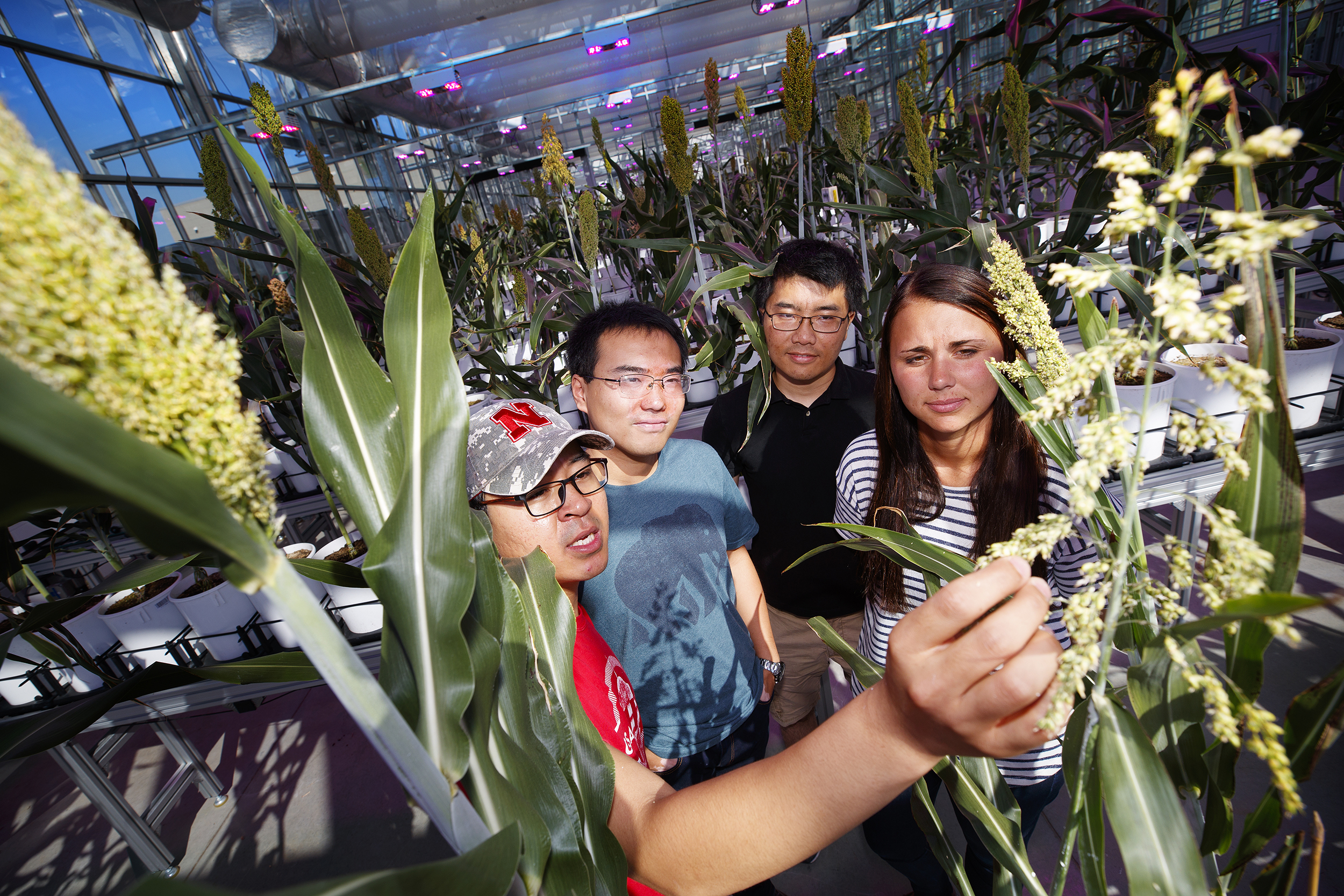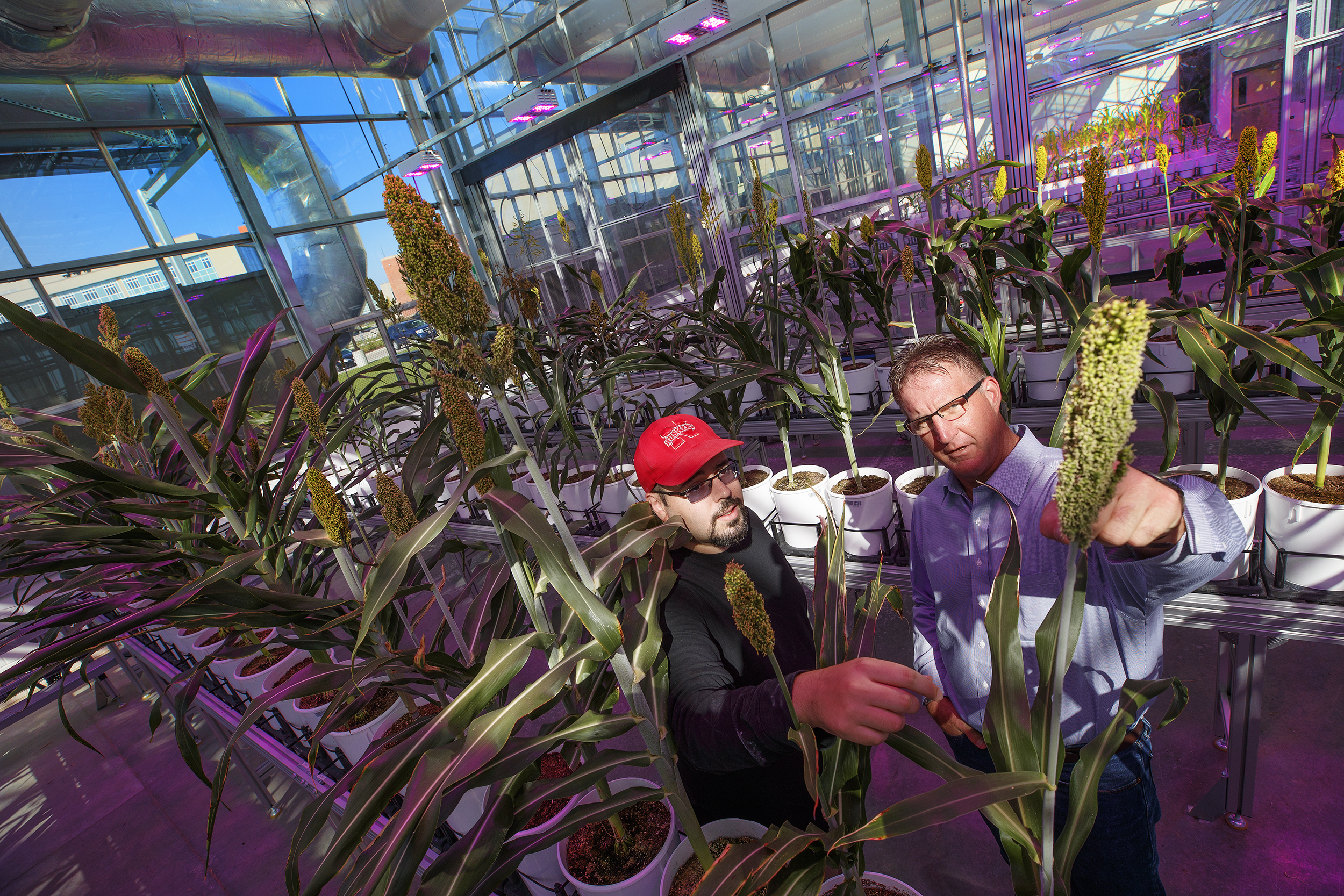
University of Nebraska–Lincoln researchers have identified specific sorghum genes and traits — including seed color — that contribute to a healthy gut microbiome, the ecosystem of microorganisms living in the GI tract. This groundbreaking discovery paves the way for identifying additional traits in sorghum and other crops that have the potential to improve human health, as well as for the emergence of new crop varieties developed with microbiome health in mind.
The Nebraska Food for Health research project focused on sorghum seed traits, and its findings, “Genetic analysis of seed traits in sorghum bicolor that affect the human gut microbiome,” were recently published in the journal Nature Communications. The lead investigator was Qinnan Yang, a postdoctoral researcher with the Department of Food Science and Technology. Other Husker scientists contributing to the project were Andrew K. Benson, the paper’s corresponding author, and co-authors Mallory Van Haute, Nate Korth, Scott E. Sattler, John Toy, Devin J. Rose and James C. Schnable.
Among their findings, the researchers identified segments on nine sorghum chromosomes where genetic variations produce a significant effect on the microbiome’s fermentation activity. The scientists ultimately found an important connection linking sorghum seed color, tannin presence in sorghum seed and effects on microbiome organisms: Sorghum varieties with functional Tan1 and Tan2 genes had dark-colored seeds and stimulated the growth of a set of microbiome organisms including Faecalibacterium, Roseburia and Christensennella.
Identifying seed traits that encourage microbiome growth of these bacteria is medically significant because they are associated with a major health benefit: reduced susceptibility to inflammatory bowel disease, as well as certain metabolic diseases.
Light-colored seeds failed to encourage such microbe production, the Husker research showed.
“Now that we’ve shown plant genes can control changes in the human gut microbiome, we can use our approach to screen hundreds or thousands of samples of different crops,” Yang said. “That makes it possible for plant breeding programs to harness natural genetic variation in crops to breed new crop varieties that improve human health by promoting beneficial bacteria in the human gut.”
For this project, Food for Health Center researchers used a multi-stage laboratory-based technique that duplicates the human body’s digestive and gastrointestinal activity by milling select sorghum samples and placing the powder in test tubes for processing and analysis. The scientists faced a major hurdle up front, because existing equipment for such study is large-scale and lacks the ability to process a high volume of samples in expedited fashion.
In this instance, Food for Health Center scientists needed to screen nearly 300 different sorghum lines in timely fashion.
After extensive discussion and collaboration, including with industry, Food for Health Center researchers solved the problem by developing a miniaturized, automated methodology they call “automated in vitro microbiome screening” (AiMS). At present, Nebraska’s Institute of Agriculture and Natural Resources is the only academic institution in the world using this innovative technology for seed-trait/microbiome analysis.
The Nature Communications paper is the first of several academic papers the IANR scientists are preparing from their AiMS-enabled studies.
The concept for the AiMS methodology “was nothing more than a pipe dream six years ago. Now, it’s turned into reality,” said Benson, director of the Food for Health Center and the Food for Health Presidential Chair in the Department of Food Science and Technology.

The AiMS methodology stands out for its versatility. Using it, Husker scientists can screen a large set of genetic material for only a small set of human subjects, or they can screen a large population of human subjects for a small set of genetic traits. They can study microbiome activity of healthy human participants but also that of participants with health challenges. They can study the gut metabolism of humans but also that of food animals. And the seed trait studies can analyze the microbiome effects from any food crop.
“It’s really a powerful technology,” Benson said. “The sky’s the limit on this.”
These steps forward are a fulfillment of the vision that has powered the Food for Health Center from its beginning, starting with a set of preliminary papers Benson and Robert Hutkins, a fellow professor of food science and technology, drew up in 2006 and 2007. Groundbreaking DNA sequencing technology was beginning to appear on the scientific horizon, they wrote, and the university needed to think strategically about how it could use those new tools to achieve major research contributions.
In subsequent years, IANR faculty and administrators have followed up on that vision through strategic discussions; launch of the Food for Health Center in 2017 and food trait and microbiome research facilities at Nebraska Innovation Campus; key philanthropic and Husker investments in initiatives such as the Gnotobiotic Mouse Facility and AiMS technology; and ongoing transdisciplinary collaboration.
The Nature Communications paper is the start of a new stage of discovery at the Food for Health Center, Benson said. The paper “is sort of at the front end. The joy now is to see how what we discover translates to the rest of the center. And the great thing is that we have the collaborative researchers who are there to do it. They’re just waiting” to carry on important follow-up projects and analysis.
All these developments, Benson said, “resonate back to 2006 and 2007, when we said, ‘Gee, what if …’” Now, he said, “Here we are, actually trying to do it.”









